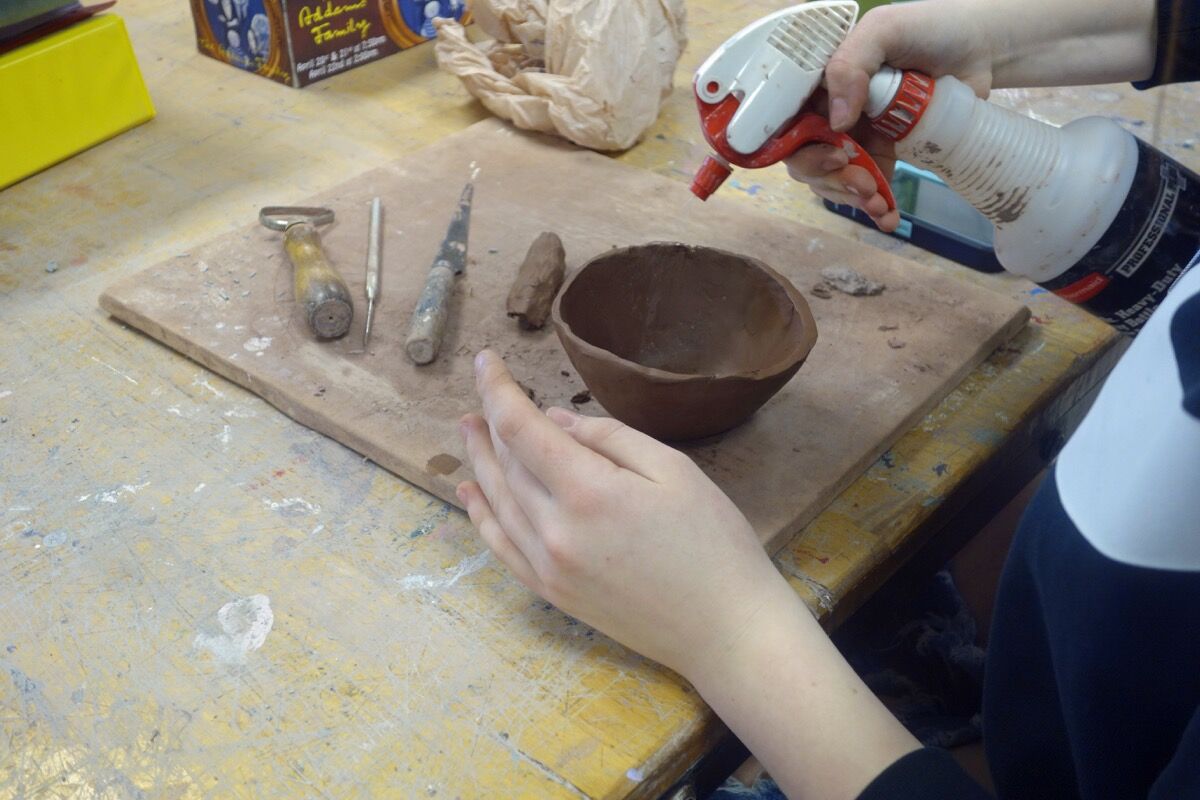Why We’re Still Making Pinch Pots

artsy_On a Tuesday evening in early July, I felt a small pang of dread as I walked into a new semester of ceramics class. I love ceramics—it’s my hobby—and I’m particularly keen on handbuilding, the type of work that does not involve the pottery wheel. But I was apprehensive about the typical lesson that kicks off any new handbuilding course: making a pinch pot.
A pinch pot is a small vessel you can create with just your hands; the act of making one can help you understand the consistency of clay and how to control it. My aversion to pinch pots began a couple of years ago at a communal ceramics studio in Manhattan. I overheard a woman complaining to her friend about a teacher who requires everyone to make a pinch pot on the first day of class. Her exasperation resonated earlier this summer, as my umpteenth introduction to pinch pots drew near. Though I’m certainly not an expert, I’m currently in the process of building a small army of figurative sculptures, so the idea of fashioning pinch pots again and again feels tiresome, if not extraneous.
Recently, I began to question the value of the pinch pot exercise. Is it the best way to become familiar with shaping clay? Does requiring beginners to make basic pots steer them away from working sculpturally? Does it stunt creativity? After speaking with my recent teachers, I was reminded that making a pinch pot is not just about making a pot. For someone who’s pressing their hands into clay for the first time, building an ambitious sculpture, or floundering in a creative rut, the ability to make a pinch pot is a crucial skill.
“People have been making pinch pots probably since the moment they learned that they could dig up dirt,” said Cammi Climaco, a ceramic artist who has been teaching at art schools and communal clay studios for around a decade. Pinch pots that date back over 17,000 years have been discovered in China. At some point, the practice that started as a necessity—making an object to hold food or water—turned into the foundations of creating ornate vessels, and later, the basis for learning to manipulate clay.
Climaco starts her classes with pinch pots because that’s how she learned as a student. You make a clay ball the size of your hand, she explained, poke your thumb in the center, then pinch the clay slowly, while turning it. “There’s a technique in metal called raising, where you take a flat piece of steel and hammer it into a vessel, but the thing about clay is that there’s no tool between your hand and the material,” she offered. “You immediately learn that your hands are the tool.”
, an artist who works with ceramics and also teaches at clay studios in New York, noted that pinch pots make for a good ice-breaker. “Many students may be brand new to clay or haven’t made anything for a long time, so it’s a good reminder of how the material works,” he said. He introduces the exercise by encouraging students to use the force of a goldfish, rather than Jaws. “I also always tell my students to close their eyes and pretend their eyes are on their fingertips,” he added. “It forces them to focus, slow down, and consider the material.”
Anyone can make a pinch pot, Climaco noted, but it’s not necessarily intuitive for everyone. Students often pinch too hard and too fast, making their form very wide or thin and causing it to collapse. If you don’t get it right away, it can be frustrating. “I teach people who are VPs of their company, at the top of their game, and they feel so beaten down or humiliated,” she said. “You just have to remind them, ‘How are you supposed to be good at something you’ve never done before?’” It’s a humbling experience, she added, given that even a two-year-old can do it. “There’s sort of an irony to it.”
After you master the pinch pot, you can use the technique to build ambitious forms, or create several and attach them to create hollow sculptures. Climaco recalled that a former student of hers once used pinch pots to build a dynamic rabbit head with flutes for ears. The exercise can also be helpful in moments of creative block, she added. “Once in a while, when I’m bereft of ideas, I’ll just sit and make pinch pots,” she offered. “Then I’ll realize, ‘Oh, this looks like a mug.’ And then I’ll make 20 pinch pot mugs. So one little absent-minded thing can become a whole project.”
While it might sound terrible to spend a whole semester just making pinch pots, Weisberg said, it could also be incredibly beneficial. “Think about sushi chefs who spend years just learning to make rice,” he said. “To be honest, making a pinch pot takes great focus and attention to detail…skills and considerations one must have to explore more creative ways of working. One must have fundamental skills, and know what to do with them, in order to break the rules. That piece of fish is nothing if it’s on a ball of bad rice.”
One crucial element of making a pinch pot is learning to consider the interior and exterior of a form, Weisberg noted. “Attention to and action applied to the inside of an object is equally as important to what is happening on the outside,” he explained. “That’s not just a fundamental pinch pot lesson, that’s fundamental for life.
